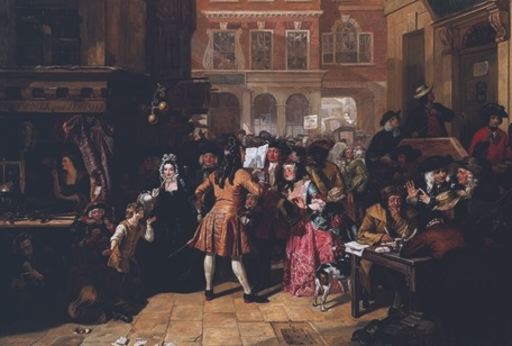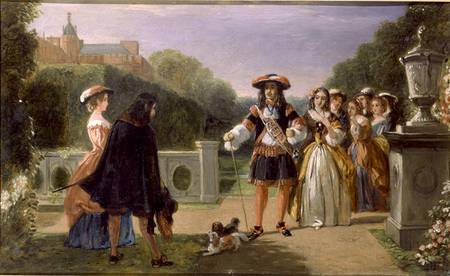Edward Matthew Ward (1816 – 1879)
Get a Edward Matthew Ward (1816 – 1879) Certificate of Authenticity for your painting (COA) for your Edward Matthew Ward (1816 – 1879) drawing.
For all your Edward Matthew Ward (1816 – 1879) artworks you need a Certificate of Authenticity (COA) in order to sell, to insure or to donate for a tax deduction.
Getting a Edward Matthew Ward (1816 – 1879) Certificate of Authenticity (COA) is easy. Just send us photos and dimensions and tell us what you know about the origin or history of your Edward Matthew Ward (1816 – 1879) painting or drawing.
If you want to sell your Edward Matthew Ward (1816 – 1879) painting or drawing use our selling services. We offer Edward Matthew Ward (1816 – 1879) selling help, selling advice, private treaty sales and full brokerage.
We have been authenticating Edward Matthew Ward (1816 – 1879) and issuing certificates of authenticity since 2002. We are recognized Edward Matthew Ward (1816 – 1879) experts and Edward Matthew Ward (1816 – 1879) certified appraisers. We issue COAs and appraisals for all Edward Matthew Ward (1816 – 1879) artworks.
Our Edward Matthew Ward (1816 – 1879) paintings and drawings authentications are accepted and respected worldwide.
Each COA is backed by in-depth research and analysis authentication reports.
The Edward Matthew Ward (1816 – 1879) certificates of authenticity we issue are based on solid, reliable and fully referenced art investigations, authentication research, analytical work and forensic studies.
We are available to examine your Edward Matthew Ward (1816 – 1879) painting or drawing anywhere in the world.
You will generally receive your certificates of authenticity and authentication report within two weeks. Some complicated cases with difficult to research Edward Matthew Ward (1816 – 1879) paintings or drawings take longer.
Our clients include Edward Matthew Ward (1816 – 1879) collectors, investors, tax authorities, insurance adjusters, appraisers, valuers, auctioneers, Federal agencies and many law firms.
We perform Edward Matthew Ward art authentication, appraisal, certificates of authenticity (COA), analysis, research, scientific tests, full art authentications. We will help you sell your Edward Matthew Ward or we will sell it for you.

Edward Matthew Ward was an English Victorian narrative painter best known for his murals in the Palace of Westminster depicting episodes in British history from the English Civil War to the Glorious Revolution.
Ward was born in Pimlico, England. As a student at the Royal Academy of Arts Ward became a member of The Clique, a group of painters led by Richard Dadd. Like other members of the Clique Ward saw himself as a follower of Hogarth and Wilkie, considering their styles to be distinctly national in character. Many of his early paintings were set in the eighteenth century and were on Hogarthian subjects. He also painted episodes from seventeenth century history, influenced by the thinking of his friend, the historian Thomas Babington Macaulay. He also painted subjects from the history of the French Revolution.
In the 1850s Ward came into conflict with the Pre-Raphaelites, especially Millais, whose style of art he considered to be un-British. Ward’s painting of Charlotte Corday being led to execution beat Millais’s Ophelia for a prize at Liverpool, leading to much debate at the time.
Such historical paintings led to Ward’s commission to paint eight scenes in the corridor leading into the House of Commons. These were to depict parallel episodes on the Royalist and Parliamentary sides in the Civil War. Ward’s paintings depict the opposed figures as if confronting one another across the corridor.

Ward continued to paint Hogarthian versions of episodes from British history throughout the 1860s, notably Hogarth’s Studio in 1739 (1863, York City Art Gallery) the Antechamber at Whitehall During the Dying Moments of Charles II (1865, Walker Art Gallery, Liverpool). In the 1870s he painted some modern-life genre subjects, but towards the end of the decade began to suffer painful illness and depression, resulting in his suicide in 1879.
His wife Henrietta Ward was also a painter. After her husband’s death she became a successful art teacher. His son Leslie Ward became a popular caricaturist for the magazine Vanity Fair under the nickname ‘Spy’.

Reviews
1,217 global ratings
5 Star
4 Star
3 Star
2 Star
1 Star
Your evaluation is very important to us. Thank you.
